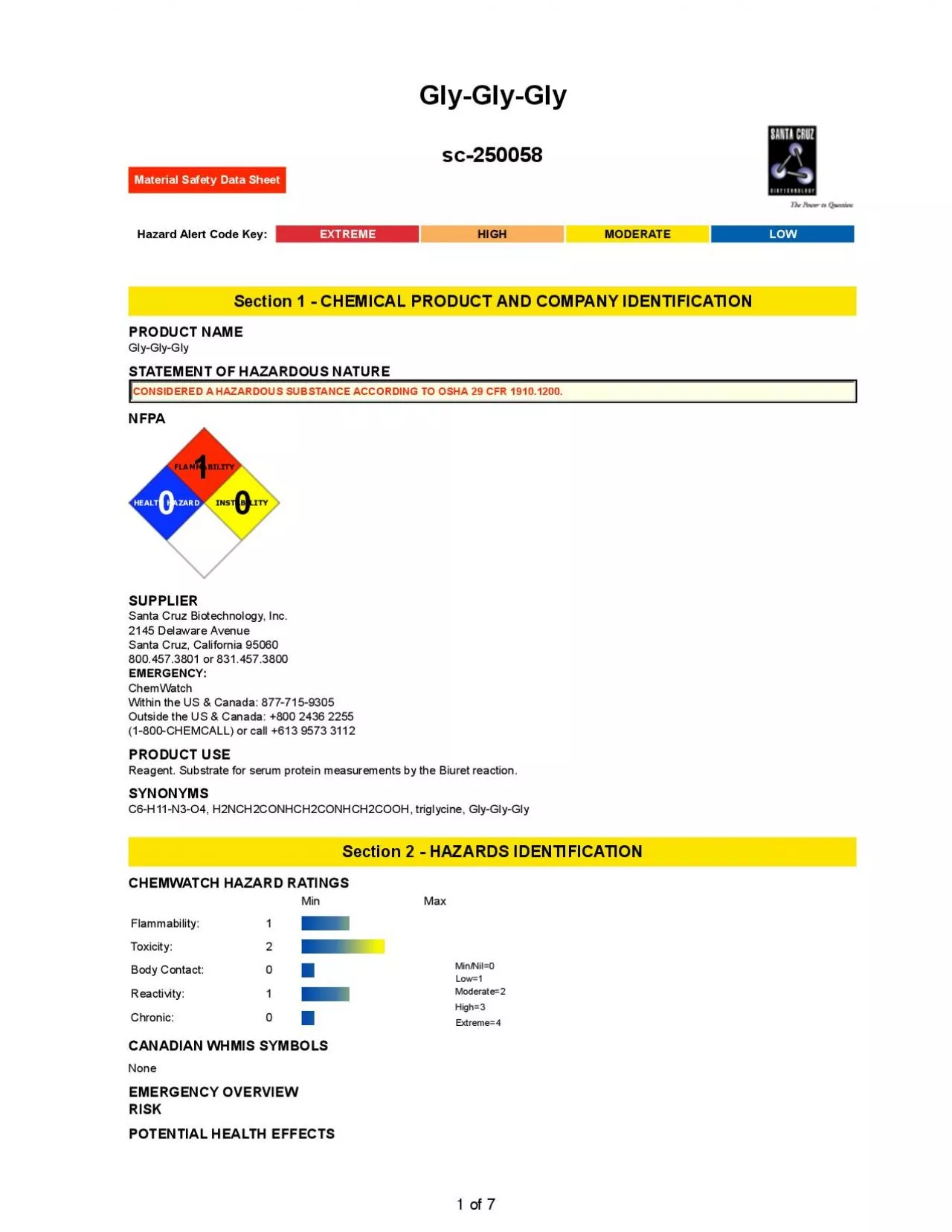

Polyethylene or polypropylene container Check all containers are clearly labelled and free from leaks Particulates nototherwise regulatedRespirable fraction5US WyomingToxic andHazardousSubsta ID: 958911
Download Pdf The PPT/PDF document "EYE Although the material is not thought..." is the property of its rightful owner. Permission is granted to download and print the materials on this web site for personal, non-commercial use only, and to display it on your personal computer provided you do not modify the materials and that you retain all copyright notices contained in the materials. By downloading content from our website, you accept the terms of this agreement.
EYE! Although the material is not thought to be an irritant, direct contact with the eye may cause transient discomfort characterized by tearing orconjunctival redness (as with windburn). Slight abrasive damage may also result.SKIN! " Polyethylene or polypropylene container." Check all containers are clearly labelled and free from leaks. (Particul
ates nototherwise regulatedRespirable fraction)5US - WyomingToxic andHazardousSubstancesTable Z1 Limitsfor Air " Presence of incompatible materials." Product is considered stable. TOXICITY AND IRRITATIONGLYCYLGLYCYLGLYCINE:! No significant acute toxicological data identified in literature search. Section 12 - ECOLOGICAL INFORMATION No data Ec
otoxicityIngredientPersistence: Water/SoilPersistence: AirBioaccumulationMobilityglycylglycylglycineLOWLOWHIGH Section 13 - DISPOSAL CONSIDERATIONS Disposal InstructionsAll waste must be handled in accordance with local, state and federal regulations.$ Legislation addressing waste disposal requirements may differ by country, state and/ or territ
ory. Each user must refer to laws operating inA Hierarchy of Controls seems to be common - the user should investigate:" Reduction" Reuse" Recycling" Disposal (if all else fails)This material may be recycled if unused, or if it has not been contaminated so as to make it unsuitable for its intended use. Shelf lifeconsiderations should also be appli
ed in making decisions of this type. Note that properties of a material may change in use, and recycling orreuse may not always be appropriate.DO NOT allow wash water from cleaning equipment to enter drains. Collect all wash water for treatment before disposal." Recycle wherever possible." Consult manufacturer for recycling options or consult Wast
e Management Authority for disposal if no suitable treatment or disposal facilitycan be identified. Section 14 - TRANSPORTATION INFORMATION NOT REGULATED FOR TRANSPORT OF DANGEROUS GOODS: DOT, IATA, IMDG Section 15 - REGULATORY INFORMATION glycylglycylglycine (CAS: 556-33-2) is found on the following regulatory lists;"Canada - Prince Edward Is
land Occupational Exposure Limits","Canada National Pollutant Release Inventory (NPRI)","US - CaliforniaPermissible Exposure Limits for Chemical Contaminants","US - Michigan Exposure Limits for Air Contaminants","US - TennesseeOccupational Exposure Limits - Limits For Air Contaminants","US - Wyoming Toxic and Hazardous Substances Table Z1 Limits f